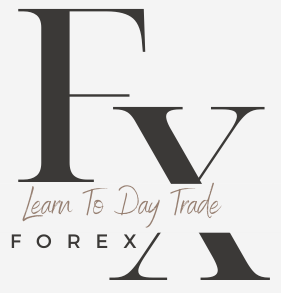Introduction to Forex
Welcome to the intriguing world of the foreign exchange market, or forex as it’s more commonly known. Whether you’re an aspiring trader, a curious individual, or a seasoned professional looking to revisit the basics, this article aims to provide you with a comprehensive understanding of the forex market. The goal is not just to define forex trading, but to delve into its size, significance, key players, and the basic dynamics that govern it.
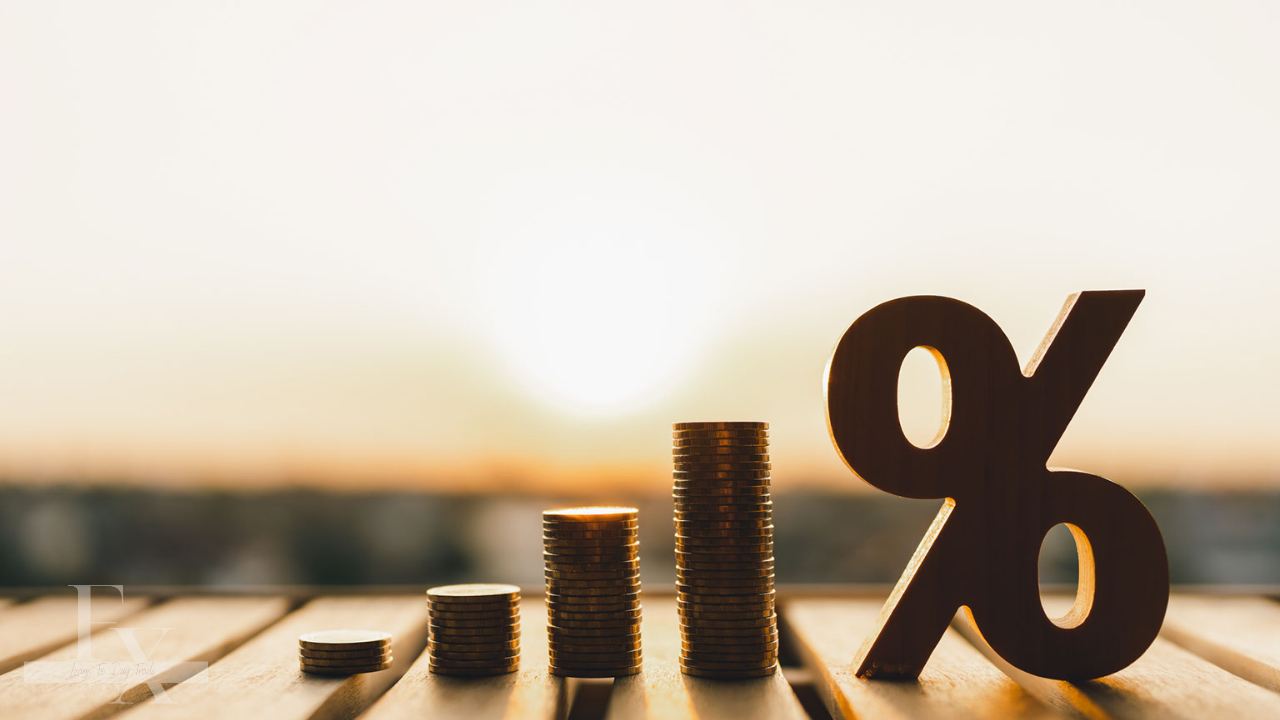 Understanding the forex market is not simply a step, but a leap towards successful trading. The market’s unique attributes and immense scale, coupled with its rapid, 24/7 pace, require a strong foundational knowledge. The nuances of currency pair fluctuations, the importance of geopolitical events, and the influence of economic indicators are all components that a trader must understand to navigate the constant ebb and flow of this global marketplace.
Understanding the forex market is not simply a step, but a leap towards successful trading. The market’s unique attributes and immense scale, coupled with its rapid, 24/7 pace, require a strong foundational knowledge. The nuances of currency pair fluctuations, the importance of geopolitical events, and the influence of economic indicators are all components that a trader must understand to navigate the constant ebb and flow of this global marketplace.
A sound understanding of the forex market offers traders several advantages. It helps in deciphering economic reports and global news events, it allows for informed decision-making and risk assessment, and it lays the groundwork for developing effective trading strategies. The significance of this understanding cannot be overstated — it separates the casual participants from the successful traders. This guide aims to set you on the right path, providing you with the essential knowledge you need to understand and participate in the world’s largest financial market.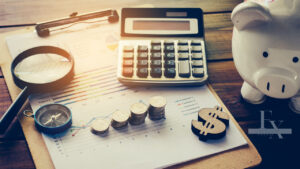
Join us as we demystify the forex market, providing you with the knowledge and tools you need to confidently engage in currency trading. Welcome to your first step in understanding the dynamic world of forex.
What is Forex?
Forex, short for “foreign exchange,” is the marketplace where currencies are traded. It’s a global, decentralized platform for the buying and selling of currencies. Unlike the stock market, which has a centralized exchange like the New York Stock Exchange, the forex market operates via an electronic network of banks, financial institutions, brokers, and individual traders.
Currencies are traded in pairs, which means you’re simultaneously buying one currency and selling another. For example, if you’re trading the EUR/USD pair, you might be buying the Euro and selling the US Dollar. These currency pairings represent the value of one currency relative to another, and it’s this fluctuation in relative values that forex traders seek to exploit.
Now, let’s delve a little into the history of forex trading. The roots of the forex market can be traced back to the international money transfers of the 19th century. However, the modern forex market began to shape in the 1970s after the Bretton Woods agreement, which established a system of fixed exchange rates, collapsed.
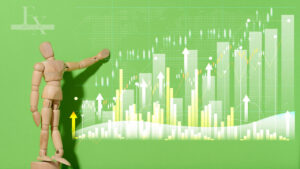 The Bretton Woods system’s breakdown led to the introduction of free-floating currencies, which allowed nations to influence their currency’s value via monetary policy. This period marked the birth of the modern forex market that we’re familiar with today, where exchange rates fluctuate continuously based on supply and demand in the market.
The Bretton Woods system’s breakdown led to the introduction of free-floating currencies, which allowed nations to influence their currency’s value via monetary policy. This period marked the birth of the modern forex market that we’re familiar with today, where exchange rates fluctuate continuously based on supply and demand in the market.
Over the years, technological advancements have played a significant role in the growth of the forex market. The advent of internet-based trading platforms in the 1990s and 2000s democratized forex trading by providing retail traders with access to the market. This development transformed the forex market into the vast, liquid, and accessible market that we know today, where millions of individuals and institutions trade trillions of dollars daily.
Understanding the forex market’s roots offers a unique perspective on its current landscape. It’s a testament to how far we’ve come, highlighting the continued potential for growth and innovation in this dynamic marketplace. The journey through the history of forex underscores that it’s not just a market of numbers and charts, but a living, evolving entity shaped by policy, technology, and, most importantly, the participants who trade within it.
The Significance of the Forex Market
One might wonder why the forex market has such a magnetic pull for traders around the globe. The answer lies in its sheer scale, accessibility, and liquid nature. The forex market, with its average daily trading volume exceeding $6 trillion, outshines all other financial markets, including the stock market, in size. This volume comes from the multitude of participants, from large financial institutions and hedge funds to retail traders, who trade currency around the clock.
 Its status as the largest financial market in the world comes with a level of liquidity that’s unparalleled. Liquidity, in simple terms, reflects the ease with which an asset or security can be bought or sold in the market without causing a significant price change. In the context of forex, this high liquidity means that trades can usually be executed quickly and with minimal slippage, allowing traders to capitalize on even the smallest fluctuations in currency prices.
Its status as the largest financial market in the world comes with a level of liquidity that’s unparalleled. Liquidity, in simple terms, reflects the ease with which an asset or security can be bought or sold in the market without causing a significant price change. In the context of forex, this high liquidity means that trades can usually be executed quickly and with minimal slippage, allowing traders to capitalize on even the smallest fluctuations in currency prices.
Perhaps one of the most unique attributes of the forex market is its operation hours. Unlike most financial markets, which have fixed hours, the forex market operates 24 hours a day, five days a week. This round-the-clock activity is possible because forex trading isn’t centralized in a physical location. Instead, it takes place in major financial centers worldwide – including Sydney, Tokyo, London, and New York – across different time zones. As a result, as the business day ends in one part of the world, it begins in another, allowing the forex market to function continuously.
This feature not only increases the accessibility of the forex market to traders globally but also contributes to its volatile nature. The constant influx of data from economic announcements and other geopolitical events worldwide can cause currency values to fluctuate at any time of the day or night.
Furthermore, the open nature of the forex market offers a level playing field for all participants, regardless of their size. Both retail and institutional traders have access to the same price information and can engage in direct competition with each other.
In summary, the scale, liquidity, and accessibility of the forex market, combined with its continuous operation, make it a highly attractive arena for trading. It provides traders with a myriad of opportunities to profit from the ever-changing dynamics of global currency values.
Basic Dynamics of Currency Trading
The beating heart of the forex market lies in the trading of currency pairs. Every transaction involves the simultaneous buying of one currency and selling of another. These two currencies combined are referred to as a ‘currency pair’, represented in a format like EUR/USD or USD/JPY.
 In a currency pair, the first currency is called the ‘base’ currency, and the second one is the ‘quote’ currency. The base currency is the one you buy or sell, while the quote currency is the currency you use to carry out the transaction. So, for instance, in the currency pair EUR/USD, EUR is the base currency, and USD is the quote currency.
In a currency pair, the first currency is called the ‘base’ currency, and the second one is the ‘quote’ currency. The base currency is the one you buy or sell, while the quote currency is the currency you use to carry out the transaction. So, for instance, in the currency pair EUR/USD, EUR is the base currency, and USD is the quote currency.
When you see a price quoted for this pair, it reflects how much of the quote currency (in this case, USD) it would take to buy one unit of the base currency (EUR). So, if the EUR/USD pair is priced at 1.20, it means it would take 1.20 US dollars to buy one Euro.
When you ‘buy’ a currency pair, you’re buying the base currency and selling an equivalent amount of the quote currency. Conversely, when you ‘sell’ a currency pair, you’re selling the base currency and buying the quote currency.
In the realm of forex trading, a ‘pip’ is an acronym for ‘Point in Percentage’. It’s a unit of measure for currency movement and is the fourth decimal place in most currency pairs. For example, if the EUR/USD pair moves from 1.1500 to 1.1501, that’s an increase of one pip. The exception to this rule is for pairs involving the Japanese yen, where a pip is the second decimal place.
Pips are crucial in forex trading as they represent the smallest change in a currency pair’s price and are used to calculate profits and losses. For example, if a trader predicts correctly that the EUR/USD will rise and it moves from 1.1500 to 1.1550, that’s a movement of 50 pips. If the trader had decided to buy at 1.1500 and sell at 1.1550, they would have made a profit of 50 pips.
Understanding the dynamics of currency pairs and the concept of pips is foundational to navigating the forex market. They form the basic language of forex trading and provide traders with the tools they need to formulate strategies and make informed trading decisions.
What are these things called pips?
To fully appreciate the inner workings of the forex market, we need to delve into the basic dynamics of currency trading, focusing on the essential concepts of currency pairs and pips.
Currency trading in the forex market is unique because currencies are traded in pairs. This means you’re always buying one currency and simultaneously selling another. The two currencies involved in the transaction form what we call a ‘currency pair.’ Notable examples include the Euro and the U.S. Dollar (EUR/USD) or the U.S. Dollar and the Japanese Yen (USD/JPY).
The way a currency pair is constructed is not random but follows a particular order. The first currency listed in the pair is known as the ‘base’ currency, while the second currency is the ‘quote’ or ‘counter’ currency. For example, in the EUR/USD pair, EUR is the base currency, and USD is the quote currency. The quoted price represents how much of the quote currency is needed to buy one unit of the base currency.
Here’s how it works: if you were to ‘buy’ the EUR/USD pair, you’d be purchasing Euros and simultaneously selling an equivalent amount of U.S. Dollars. Conversely, if you were to ‘sell’ the pair, you’d be selling Euros and buying U.S. Dollars. This simultaneous buying and selling dynamic is a fundamental aspect of forex trading and underpins every transaction in the forex market.
Now, let’s shift our focus to ‘pips.’ A pip, short for ‘point in percentage,’ is a unit of change in the exchange rate of a currency pair. It’s a standardized unit of measurement used to show changes in the currency pair’s value. In most currency pairs, a pip corresponds to a one-digit change in the fourth decimal place of the quoted exchange rate. For example, if the exchange rate for the EUR/USD pair increases from 1.1500 to 1.1501, that is a one-pip change.
Pips play a crucial role in forex trading as they provide a quantifiable measure of the change in a currency pair’s value, allowing traders to monitor their profits and losses. Understanding how pips work can help traders manage their trades more effectively and make more informed decisions about when to enter or exit a trade.
The basic dynamics of currency trading revolve around the understanding of currency pairs and pips. These are integral parts of the forex market’s language, laying the foundation for forex trading strategies and decision-making processes. By understanding these concepts, traders can better navigate the dynamic and ever-changing landscape of the forex market.
The Use of Leverage in Forex Trading
Leverage in forex trading is essentially a loan that the broker provides to the trader, allowing them to trade larger amounts of money than they have in their account. The use of leverage can amplify both gains and losses, so it’s important to use it carefully.
The main reason leverage is important in forex trading is due to the nature of price movements in the forex markets. Currency prices typically move by small increments, known as pips. Even a 100-pip move, which is considered significant, represents only a 1% change if we’re considering a pair like EUR/USD.
Let’s take an example of wanting to make $250 with a 25-pip move, and assuming one standard lot size of 100,000 units. Without leverage, you would need to control the full 100,000 units, which, depending on the exchange rate, could be extremely expensive. However, with leverage, you might only need to control a small fraction of that amount.
For example, a broker offering 100:1 leverage would require you to have $1,000 in your trading account to control a 100,000-unit position ($100,000 / 100 = $1,000). A 25-pip move in your favor could then indeed result in a $250 profit.
So leverage allows traders to control larger positions with a smaller amount of capital. This potential to significantly increase profits from relatively small price movements is what makes the use of leverage so attractive in forex trading. However, it’s important to remember that while leverage can magnify profits, it can also magnify losses. This is why risk management is crucial when trading with leverage.
Here’s a basic example of a profit and loss (P&L) table based on a 1 standard lot size trade on the EUR/USD currency pair.
Please note, this example assumes that 1 standard lot size is 100,000 units of the base currency, and that the value of a single pip move per standard lot for EUR/USD is typically around $10.
| Pips Movement | P/L if Trade Goes in Favor (Profit in USD) | P/L if Trade Goes Against (Loss in USD) |
|---|---|---|
| 5 | 50 | -50 |
| 10 | 100 | -100 |
| 15 | 150 | -150 |
| 20 | 200 | -200 |
| 25 | 250 | -250 |
This table is a very simplistic view. Remember, in real trading, you need to consider other factors like spread, swap, commission (if any), slippage, and others that may influence your final P/L. Also, the actual P/L may vary depending on your broker’s terms and conditions.
Key Players in the Forex Market
The forex market, given its size and universal accessibility, attracts a wide array of participants. These players each contribute to the market’s depth and liquidity, and their interactions drive the constant fluctuations in currency values. Let’s take a closer look at some of these key participants:
- Central Banks: Central banks represent some of the most influential players in the forex market. They control monetary policy and interest rates for their respective countries, with the power to intervene in the forex market to stabilize their national currency. Their actions can cause substantial shifts in currency values. For instance, if a central bank decides to change its interest rate, it can lead to investors reevaluating the value of that country’s currency, triggering potentially significant price movements.
- Commercial Banks and Financial Institutions: Commercial banks and other financial institutions like investment banks and hedge funds are the largest volume traders in the forex market. They engage in forex trading for a variety of reasons, including facilitating transactions for their clients, trading on behalf of their clients, or trading for their own accounts (proprietary trading). Their high-volume trades can move the market, making them key players in the forex landscape.
- Multinational Corporations: Multinational corporations engage in forex trading primarily to pay for goods and services from foreign businesses. For example, an American company that does business in Japan will need to exchange its US dollars for yen. While their direct influence on market rates is smaller compared to other players, their forex activities can still cause notable market movements, particularly if they’re dealing with large amounts.
- Retail Traders: Individual or retail traders are private individuals who trade forex for personal profit. They may engage in forex trading as a hobby, for additional income, or as a full-time job. Although each retail trader typically deals in relatively small amounts compared to other market participants, collectively, retail traders represent a substantial portion of the overall forex market volume due to their sheer numbers.
- Brokers: Brokers act as intermediaries between retail traders and the forex market. They provide trading platforms and tools that allow individual traders to access the market and execute trades. While they don’t typically influence currency values, they play a vital role in facilitating access to the forex market for retail traders.
These key players, along with others like pension funds, insurance companies, and portfolio managers, form a complex web of participants whose activities and interactions drive the vibrant and dynamic world of forex trading. Understanding the roles and influences of these key players can provide valuable insights into market trends and potential price movements.
The Role of Economic Factors
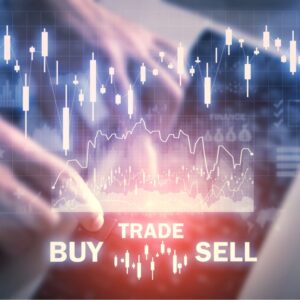 Currency prices are far from arbitrary. They dance to the rhythm of global economic events, shaped by a complex web of factors. Understanding these factors is crucial for forex traders who seek to anticipate market trends and make informed trading decisions. Here, we will delve into some of the key economic factors that influence currency values.
Currency prices are far from arbitrary. They dance to the rhythm of global economic events, shaped by a complex web of factors. Understanding these factors is crucial for forex traders who seek to anticipate market trends and make informed trading decisions. Here, we will delve into some of the key economic factors that influence currency values.
- Interest Rates: Central banks across the globe set their nation’s interest rates, which play a crucial role in shaping the relative value of currencies. Higher interest rates can attract foreign investors looking for better returns on their investments, thereby driving up the demand and value of a country’s currency. Conversely, lower interest rates can lead to a depreciation of the currency as investors might decide to move their funds elsewhere in search of better returns.
- Inflation: Inflation refers to the rate at which the general level of prices for goods and services is rising. Moderate inflation is often seen as a sign of a healthy economy, but high inflation can erode a currency’s value as it decreases the purchasing power of money. On the flip side, deflation (negative inflation) can also be harmful because it might signal a stagnating economy.
- Economic Performance Indicators: Economic indicators such as Gross Domestic Product (GDP), unemployment rates, and retail sales data can provide insights into a country’s economic health. Strong economic performance typically attracts foreign investors, which can lead to an appreciation of the currency. Conversely, weak economic data can prompt investors to sell off assets, depreciating the currency.
- Political Stability: Political events and stability can have a significant impact on a country’s currency. Stable governments, predictable policies, and peaceful conditions tend to attract foreign investors, strengthening the currency. Conversely, political instability, changes in government, or geopolitical tensions can lead to uncertainty, prompting investors to move their assets to perceived “safe-haven” currencies, thus weakening the affected country’s currency.
- Trade and Current Account Balances: A country’s trade balance – the difference between its exports and imports – also influences its currency value. If a country exports more than it imports (trade surplus), foreign buyers must purchase the country’s currency to pay for its goods, which can boost the currency’s value. Conversely, a trade deficit can lead to depreciation of the currency.
In summary, economic factors play a central role in determining currency values. Traders who understand these factors and how they interact will be better positioned to predict potential movements in the forex market. This understanding can inform trading strategies, helping traders navigate the complexities of the forex market more effectively.
Risks in the Forex Market
Participating in the forex market, while offering the potential for significant profits, is not without risks. The very elements that make forex trading enticing – such as high liquidity, 24-hour trading, and substantial leverage – can also amplify the potential for loss. Therefore, understanding the risks involved is as crucial as grasping the mechanics of trading. Let’s delve into some of the prominent risks associated with the forex market: 
- Market Risk: The forex market is influenced by numerous factors, many of which can be unpredictable or beyond an individual trader’s control. These include economic indicators, geopolitical events, changes in market sentiment, and more. Such factors can lead to rapid and significant price movements, which can result in substantial losses if not properly managed.
- Leverage Risk: Leverage is a double-edged sword in forex trading. It allows traders to control large positions with a relatively small amount of capital, amplifying potential profits. However, it also magnifies potential losses. A small adverse change in the market can lead to significant losses, potentially exceeding the initial investment.
- Interest Rate Risk: Changes in interest rates can impact currency values, as they influence investment flows between countries. A country with rising interest rates can see its currency appreciate, while a decrease in rates can lead to depreciation. This risk can affect traders who hold positions over a longer term, where shifts in interest rates become more relevant.
- Liquidity Risk: While the forex market is the most liquid market in the world, there can be periods of decreased liquidity—during market close hours or extreme market volatility. In such cases, trades might not be executed at the desired price point, resulting in what is known as ‘slippage’, potentially leading to increased losses.
- Operational Risk: This risk pertains to failures in a trader’s control systems, including technical issues (like internet connection problems or platform malfunction) or human errors. Such problems can prevent the execution of trades in a timely manner, which can be especially detrimental in a fast-paced market like forex.
- Counterparty Risk: This is the risk that the broker or financial institution that facilitates your trade defaults or fails to meet their obligations. While this is relatively rare, particularly in well-regulated markets, it can be devastating if it happens.
Given these risks, implementing a sound risk management strategy is vital for anyone involved in forex trading. This could include setting stop-loss orders to limit potential losses, regularly monitoring market news and events, using leverage wisely, and maintaining an adequate level of capital. Additionally, traders should continually educate themselves about the forex market and its risks to make informed trading decisions.
Conclusion
Stepping into the forex market can feel akin to embarking on a grand adventure. Its vastness, constant action, and potential for profit make it an attractive proposition. However, this adventure requires careful navigation – a solid understanding of the market dynamics, a clear trading strategy, prudent risk management, and an insatiable thirst for knowledge.
In this article, we’ve touched upon the surface of the vibrant world of forex trading – its history, key players, basic mechanics, economic influences, and the inherent risks. However, this knowledge is merely the foundation. The true mastery of forex trading comes with continuous learning, experience, and perseverance.
If you’re ready to dive deeper into this fascinating world, consider visiting our comprehensive Forex prop firm reviews to find the right trading partner. If you’re seeking a practical, risk-managed approach to honing your trading skills, take a proprietary firm (prop firm) challenge.
A prop firm challenge allows you to trade with the firm’s capital, mitigating personal financial risk while offering real-world trading experience. It’s a stepping stone to the career of a professional trader, with opportunities to learn, grow, and potentially earn while trading.
Remember, every great journey begins with a single step. If you’re ready to take that step into the world of forex trading, start your adventure today. The currency markets are waiting for you!
